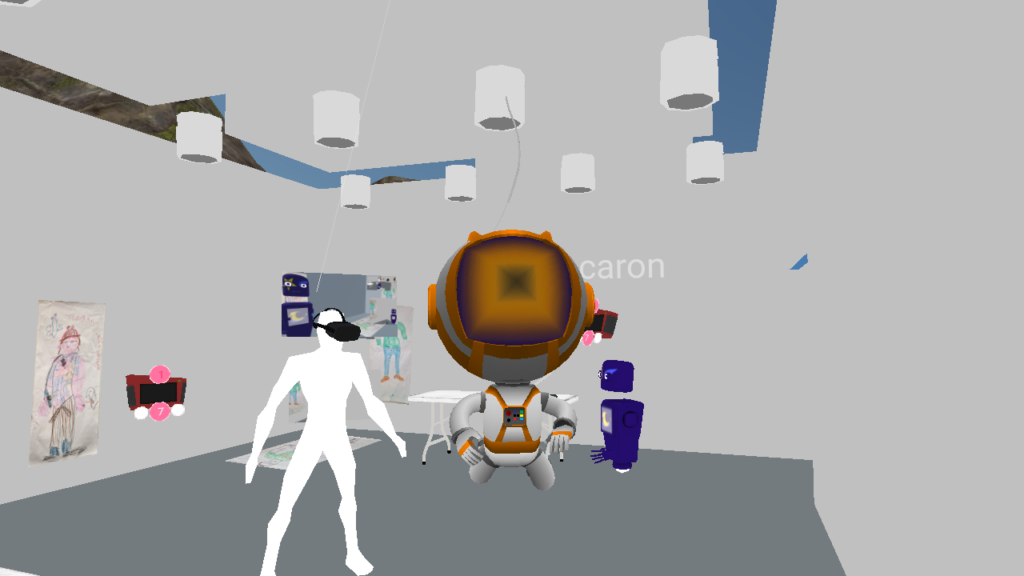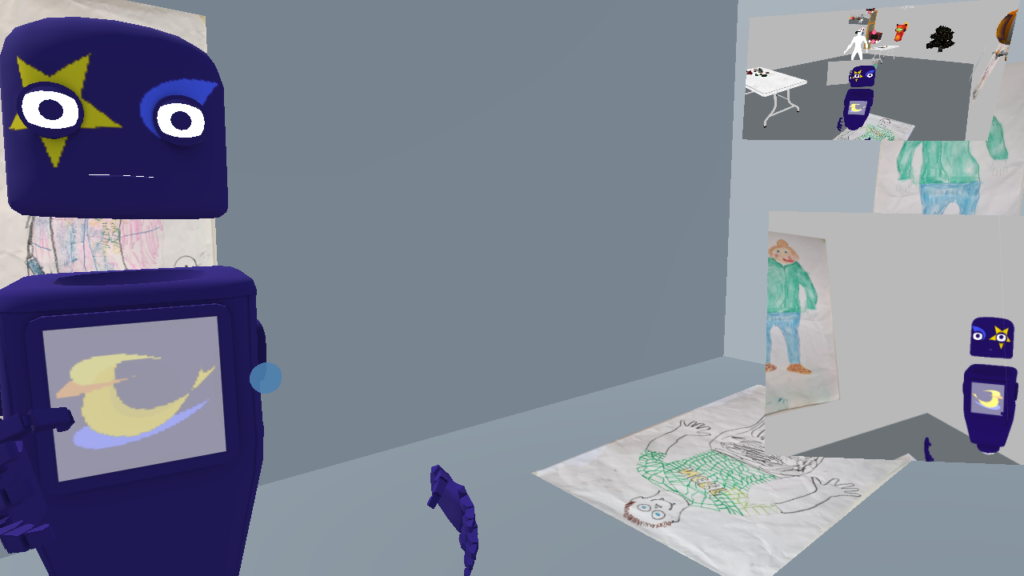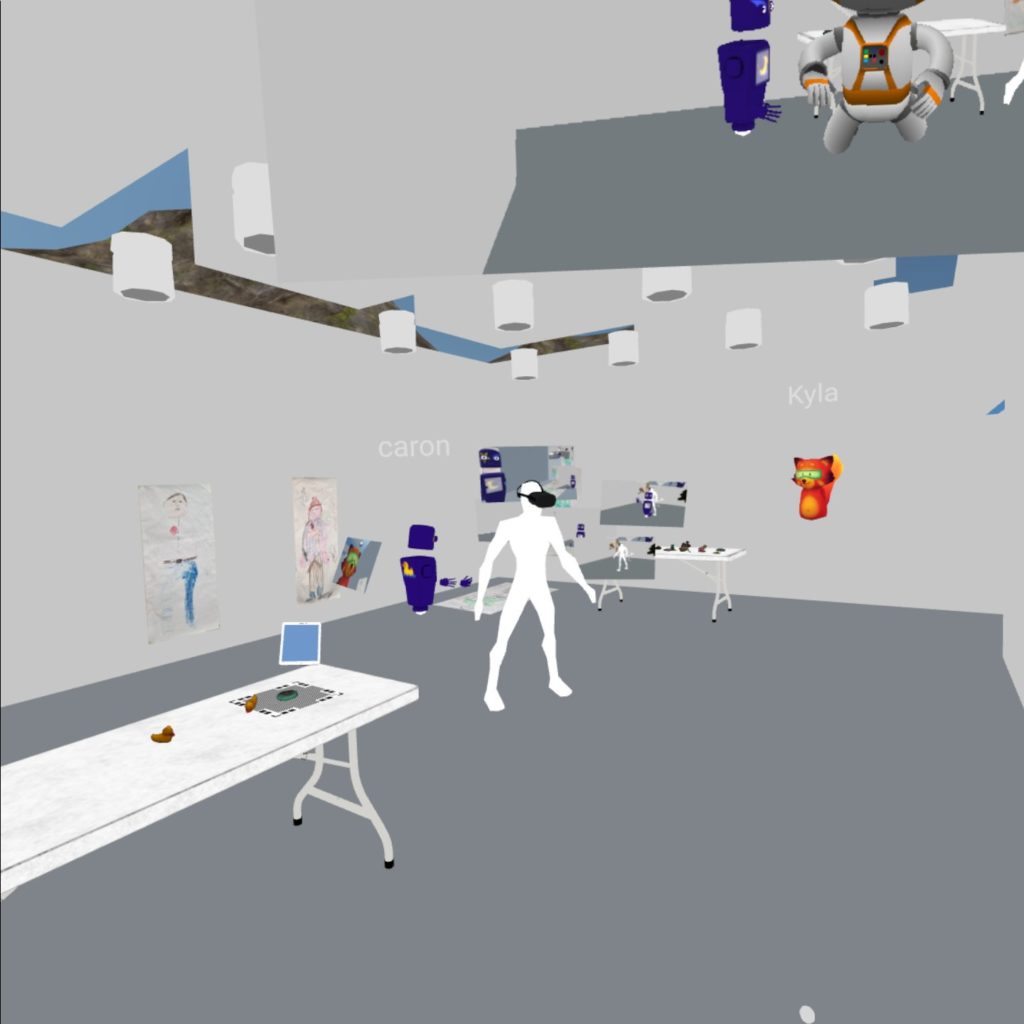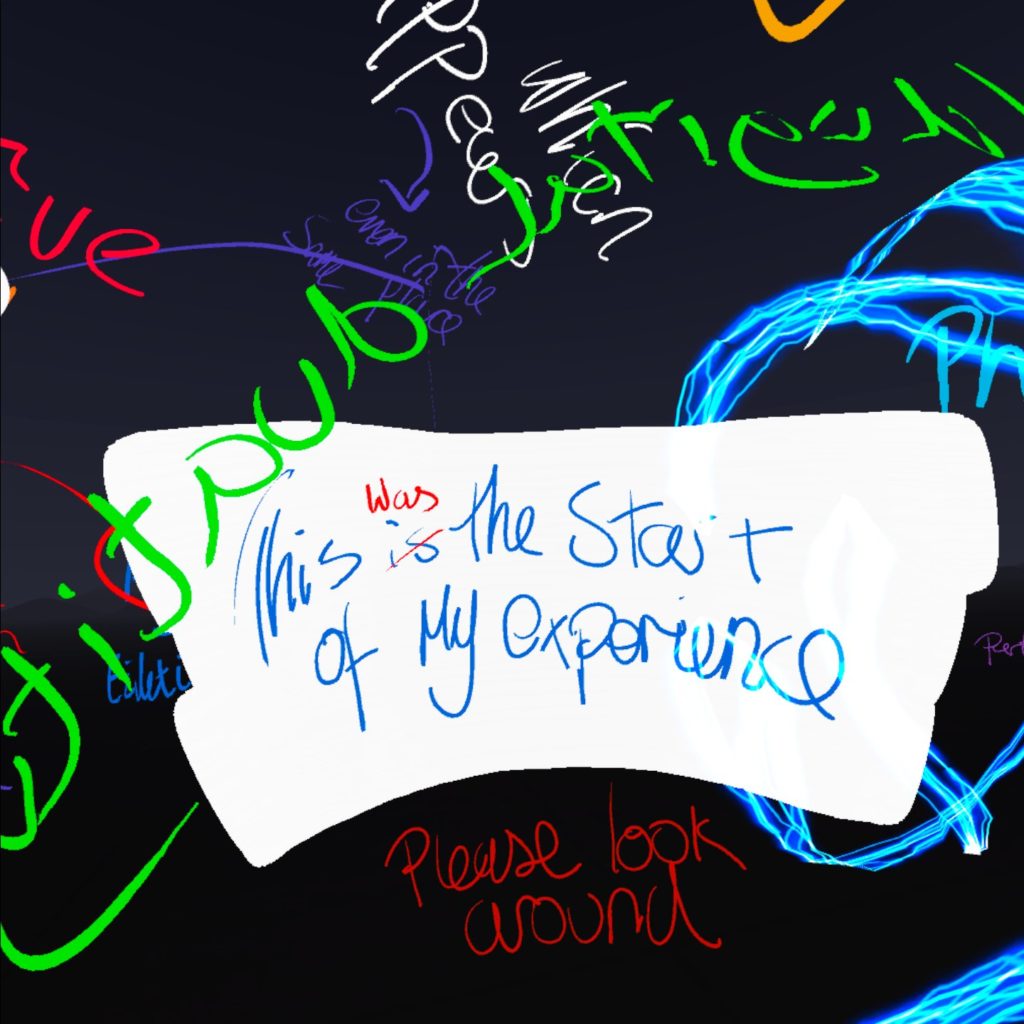
LEVEL Residency Week 2
So much thinking happened during this week, and in such a short timeframe at the end of the week. I honestly didn’t know where this week would take me. I was refamiliarising myself with the physical AND digital spaces that I had been using. I knew I wanted to explore ways to represent the participant made work in a virtual space, and so that’s where I started. This was, after all, a familiar place for me: the building of 3D models and transferring scanned objects to files for use. However, this took place in a less familiar environment: Mozilla Hubs.
My initial tinkering in Hubs was cumbersome. I found the controls problematic (on both desktop and in VR) and not as intuitive as I would have liked for participant interaction. However, as I used the system more, I became more familiar and more comfortable. Building VR from scratch on a project by project basis is both time consuming and removed from participant input, so hubs is a great alternative to get straight to a creative process. I knew that I wanted to host participant made work in a space representative of where their artwork was made, and so went ahead in 3D modelling a rough layout of the LEVEL Centre main building. It was only when I started to add the work to this space in Hubs did my thinking really start to take hold.
As I started to pin the objects in the space, I realised that just showing the objects wasn’t interesting enough for the digital medium. Afterall, this is what is done in a physical exhibition, so why should this be any different? I began to add images of drawings the participants had made and decided to lay them out roughly where there were made and displayed in the room. This brought back the memories of the workshop and the activity that took place. This activity then became my focus. By scaling and duplicating the scanned objects, I was able to show where they were made in the space and even the process of digitising them through 3D scanning. The digital exhibition space then became a place that told the story of the participation that had happened in the physical space, leaving another room for exhibiting the work in the digital ways I was more accustomed to (playing with scale, location, repetition, etc). This was something that really excites me, as it an aspect that isn’t easily achievable in physically displaying participant work (although is a technique museums use to situate a collection in the spaces objects would have been used). Even if you were able to present the making space as part of an exhibition, showing the object in stages of making, scanning and displaying would require multiple objects (or stages of) being made. In the digital space they can just be duplicated. This process provides so many questions and thoughts around the nature of participant made work. How it’s made and the story of the process. Something often forgotten, or reduced to wall copy next to the work presented. Therefore, digital space doesn’t just offer us ways of making and displaying participant made work, but telling the story of the process as well.

Participant made image in Mozilla Hubs 
v 
Participant made image in Mozilla Hubs 
Artist made image of exhibition/participation space in Mozilla Hubs
I decided to open this space for others to join, with the intention of allowing them to explore the user interface, the actions of manipulating objects and creating their version of an exhibition. What happened became so much more. The audience became participants in the space, drawing and adding their own objects, even taking pictures in the space that then became part of the space. From a phenomenological perspective the digital and physical participants had the same experience, one of being inspired and making in the LEVEL workshop space. It was also pointed out that, as the artist, I was facilitating a duality of creativity, as I stood in the physical space as well as the virtual space, at the same time (and often in the same spot). This, along with the practice of telling the story of the participatory process, is probably what I will take away most of all from this residency. I started with an idea and a general idea of what form it might take, but I’ve left with a new process of working and thinking, and in many respects a new direction and purpose in my practice that I wasn’t aware was there.
You can currently visit this space on my Mozilla Hubs Experiment page.

Something that took a backseat this week was the use of MultiBrush and the method of taking MultiBrush exports to display participant made work though Unity WebGL. This is the basis for my Immersive Notebook, which will certainly be adding to over the next few weeks. However, I was very privileged to have some mentoring from VR TiltBrush Artist Rosie Summers in using the application for participant made work. In the short time I had with Rosie, she was able to provide me with a whole host of insights that will certainly be able to guide my thinking and processes in working with participants in virtual applications. I often find myself struggling to guide the creative process in these spaces, leaving participants to creatively play (which has it’s purpose in this process) and following Rosie’s guidance, I now have a lot more confidence in leading this way of working. I’ve also been inspired to simply use the applications for my own creativity. For making art for the sake of making art and not worrying too much about the outcome and the quality. Practice makes perfect, but doesn’t mean the outcome has to be. Definitely something to pass on to participants.
[…] media artifact that reflects the events that have taken place, suspended in time. Something I found particularly interesting during my LEVEL residency, where the digital space became a record of the physical workshop space, while simultaneously […]